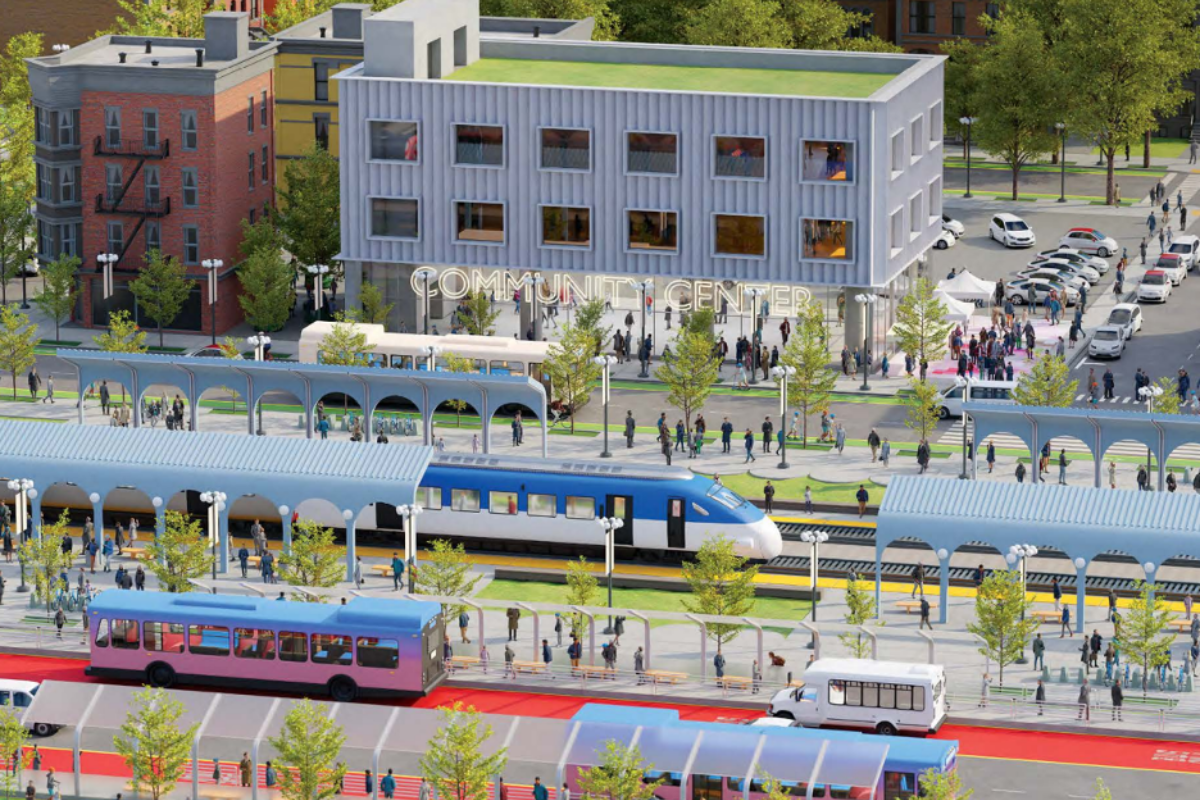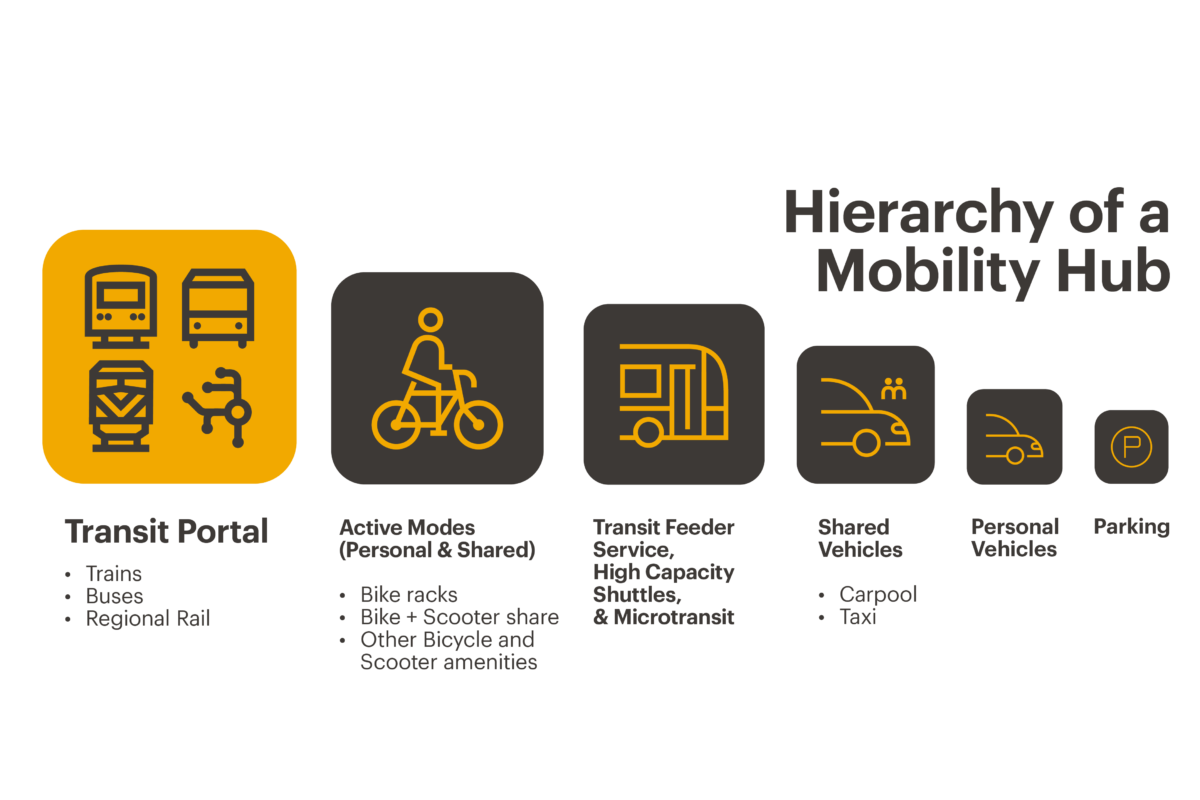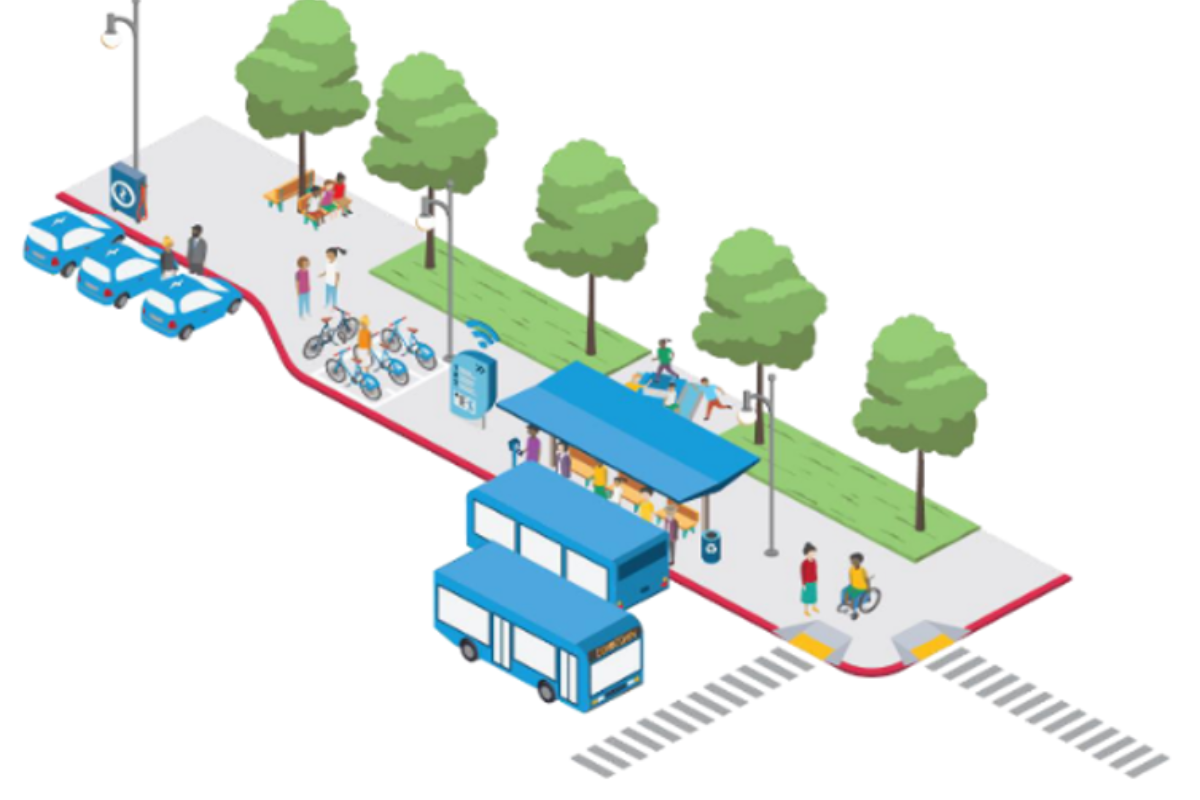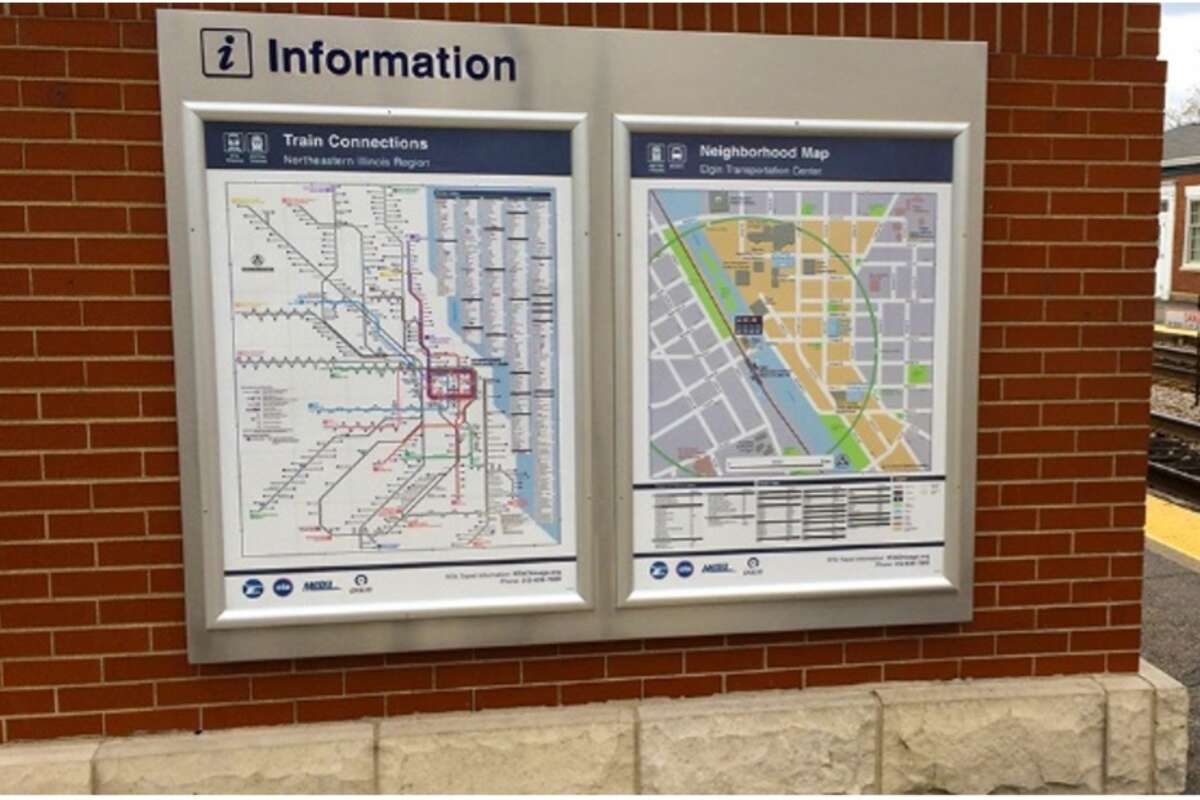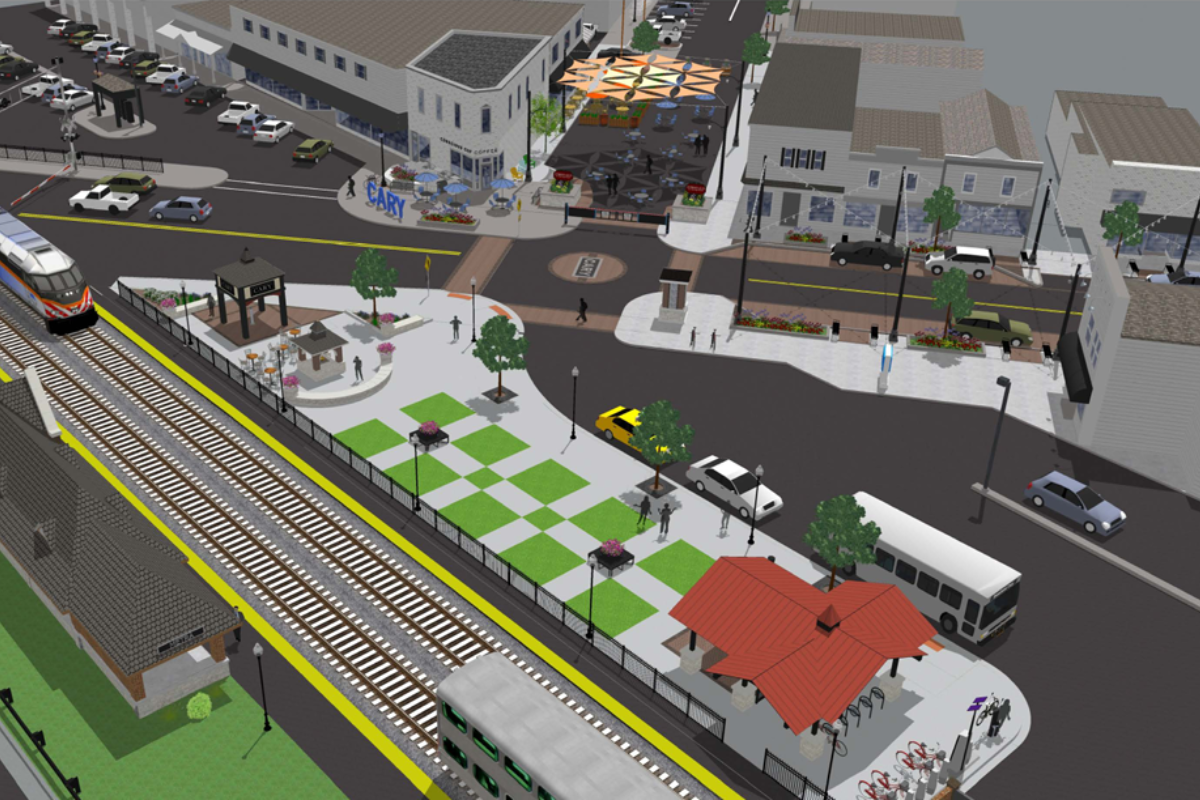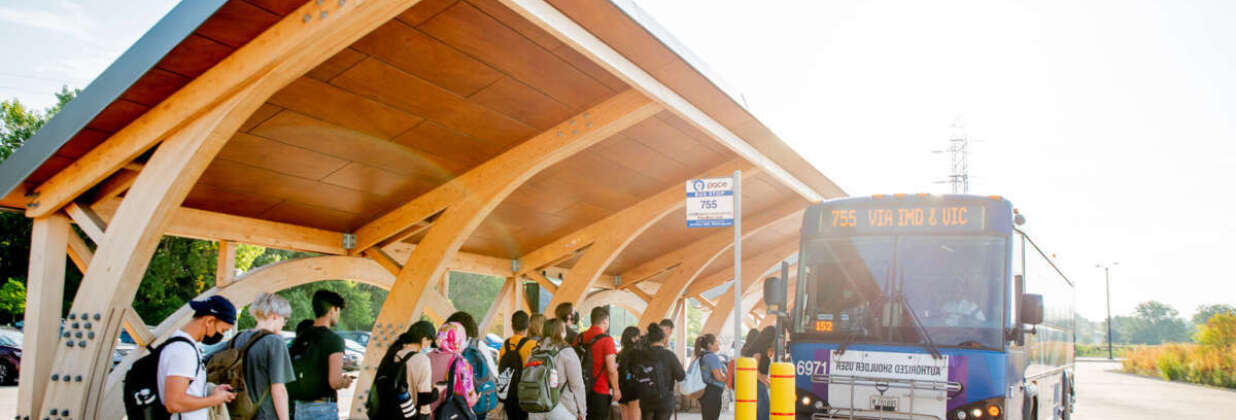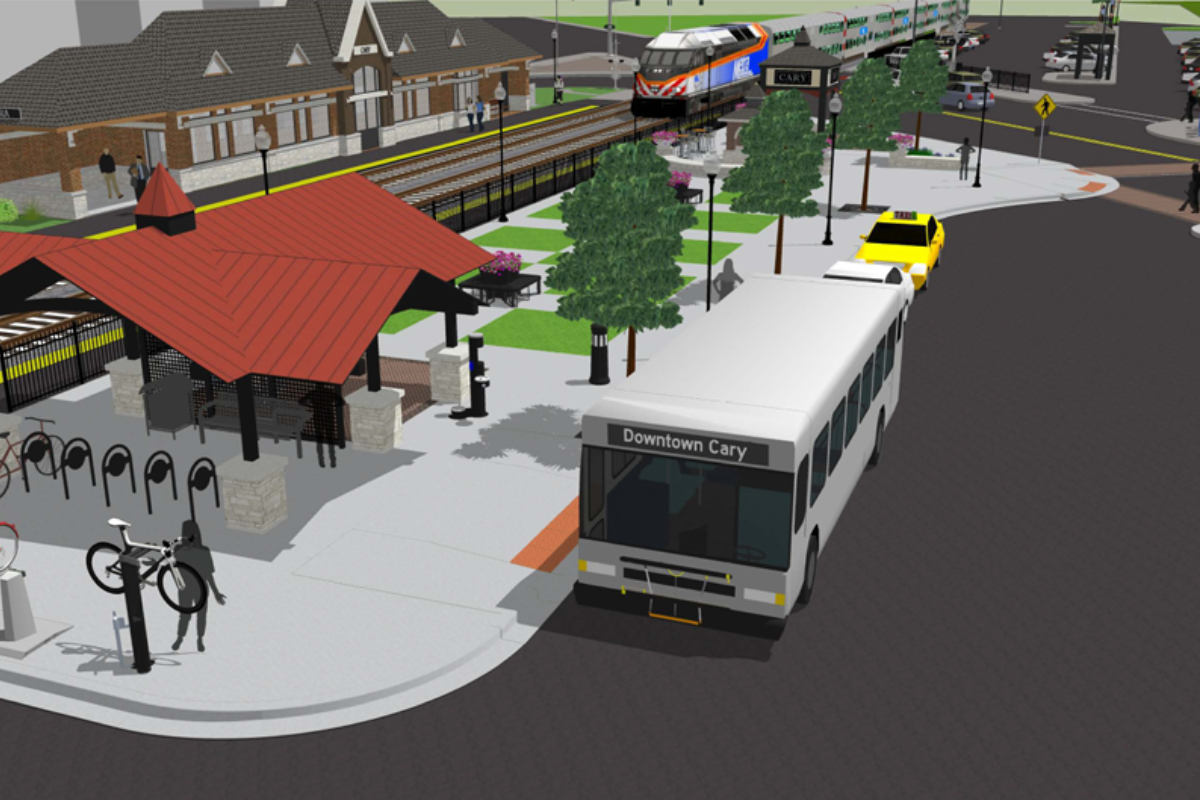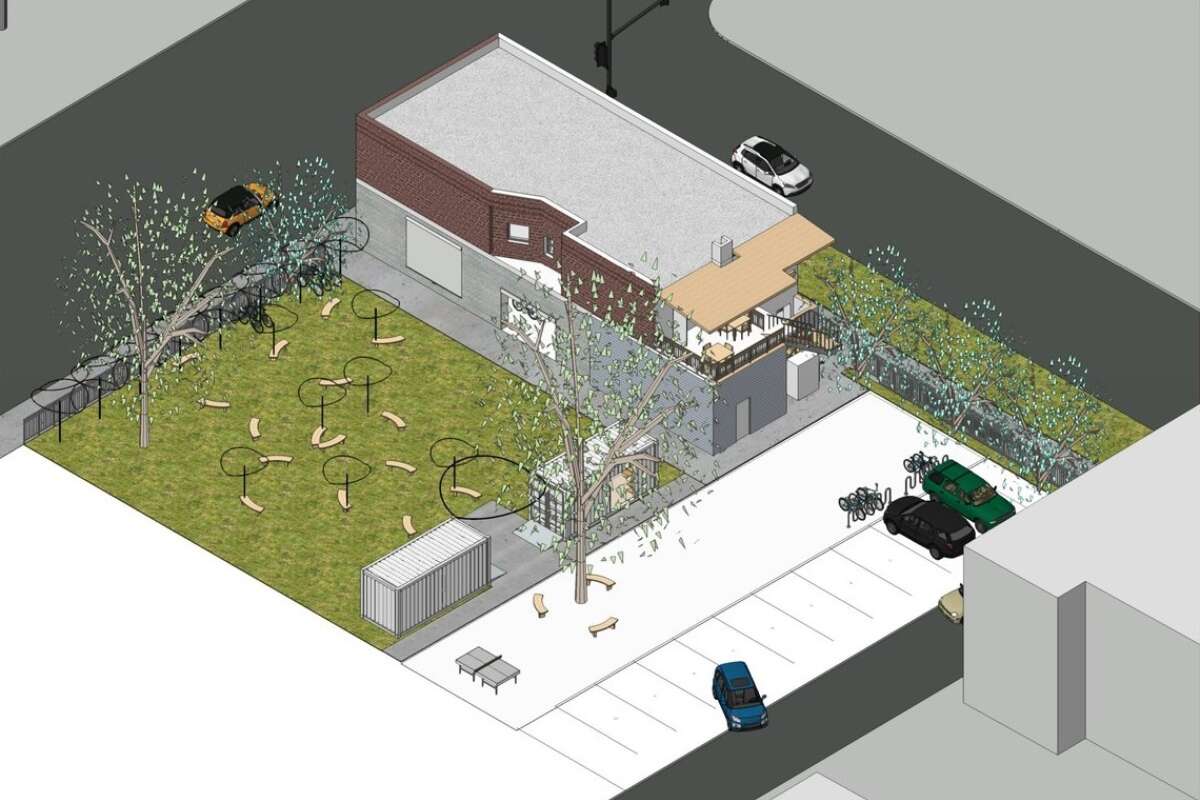Advocacy Item 4 in the RTA’s five-year strategic plan, Transit is the Answer, specifies supporting communities’ efforts to improve the area around their transit stations/stops. Microtransit—the shared programs like bikeshare, scootershare, and ride-hailing transportation that supplement traditional fixed-route service—is one way to help fill first and last mile gaps in low-density areas. Microtransit presents an opportunity to connect housing and workplaces to existing fixed-route transit, and should be explored by communities to extend access to opportunities for people without cars. Creating plans to construct mobility hubs will make it safer and easier for people to walk and bike to transit stations and stops and to better align with existing economic and workforce development efforts.
Through its Community Planning program, the RTA offers planning assistance to help municipalities envision, develop, and implement mobility hubs near their transit services. Technical assistance is available to engage the community about their vision for the hub, identify one or more sites, develop basic site design and layout, and create an implementation strategy the municipality or community organization can use to build and operate the hub. In addition, through its Access to Transit program, the RTA offers funding and technical assistance to leverage federal funding that can be used to design, engineer, and construct elements of a mobility hub.
For more information, visit our Connections Blog to read a recap or watch a recording of our 2023 Transportation Tuesday webinar on mobility hubs.
Implementing a mobility hub
To ensure you’re rolling out a coordinated mobility hub strategy for your community, consider first developing a comprehensive municipal-wide strategy utilizing the following considerations:
- Equitable access: Prioritize, with an equity lens, mobility hub planning and implementation to ensure the hub benefits those most in need of access.
- This could include identification of desired transportation modes, common destinations, and travel patterns, as well as community demographic analysis.
- Planning: Develop typologies for each setting, ensuring there are hubs designed for both major stations and smaller bus stops.
- Location: Identify feasible locations for potential mobility hubs.
- Engagement: Build community support and buy in.
- Funding and coordination: Connect with regional partners, such as transit operators, Metropolitan Planning Organizations, and county Departments of Transportation to obtain and apply a diverse array of funding sources.
- Other best practices: Utilize best practices identified in pilot programs to roll out a mobility hub strategy.
Once your mobility hub strategy is determined, you can begin building individual hubs, in the order of priority, utilizing the following steps:
- 1. Advance pilot projects in various settings to find successful solutions.
- 2. Convene necessary partners and agencies with an interest in the location, especially transit agencies and the agency with roadway jurisdiction.
- 3. Conduct a site selection process.
- 4. Design conceptual site plans implementing the developed typologies.
- 5. Obtain feedback from the community, adjacent landowners, and partnering agencies.
- 6. Develop a strategy for activating any public gathering space that includes ongoing operations and maintenance.
- 7. Preliminary engineering for environmental considerations.
- 8. Design engineering and construction.

